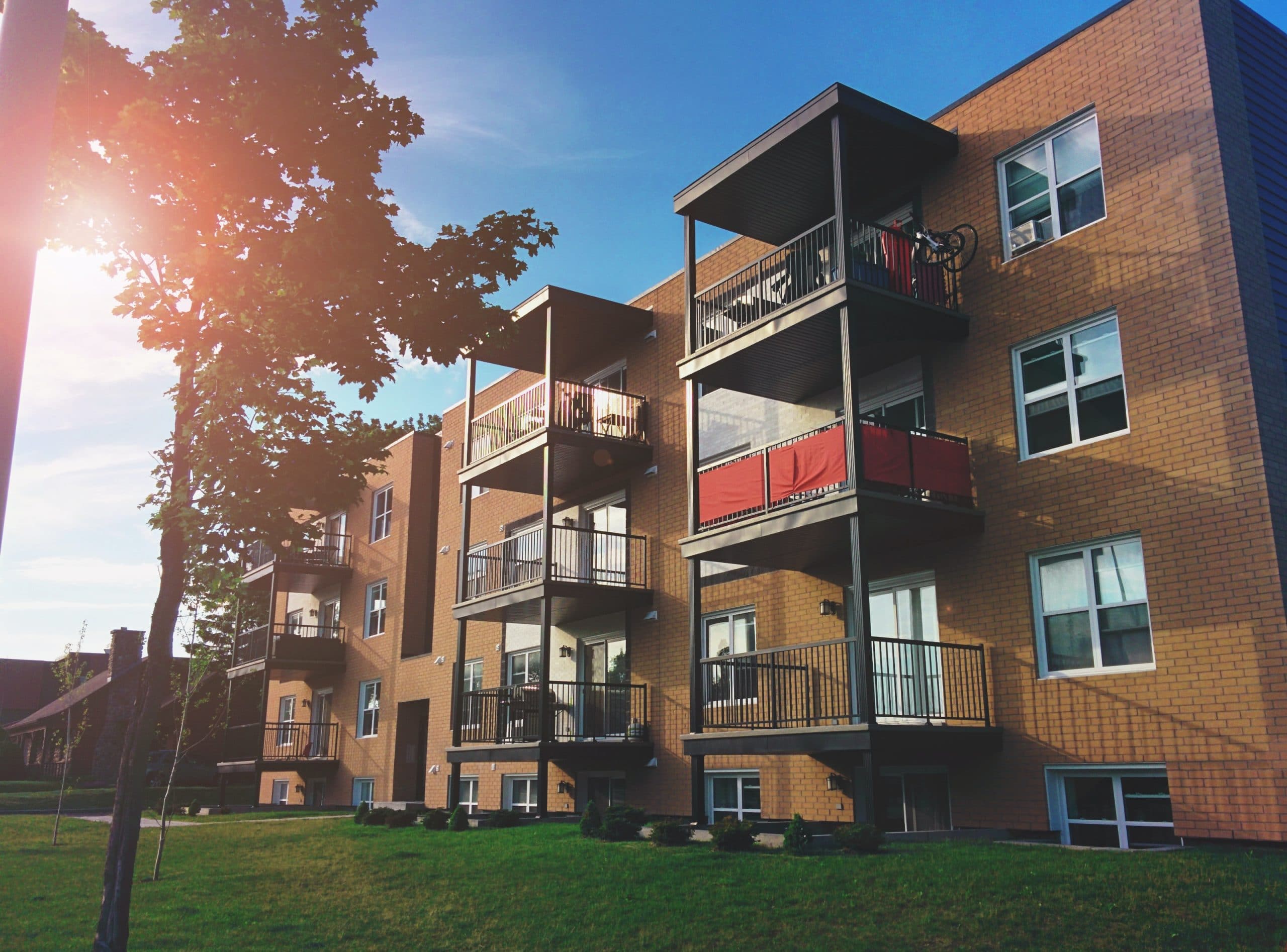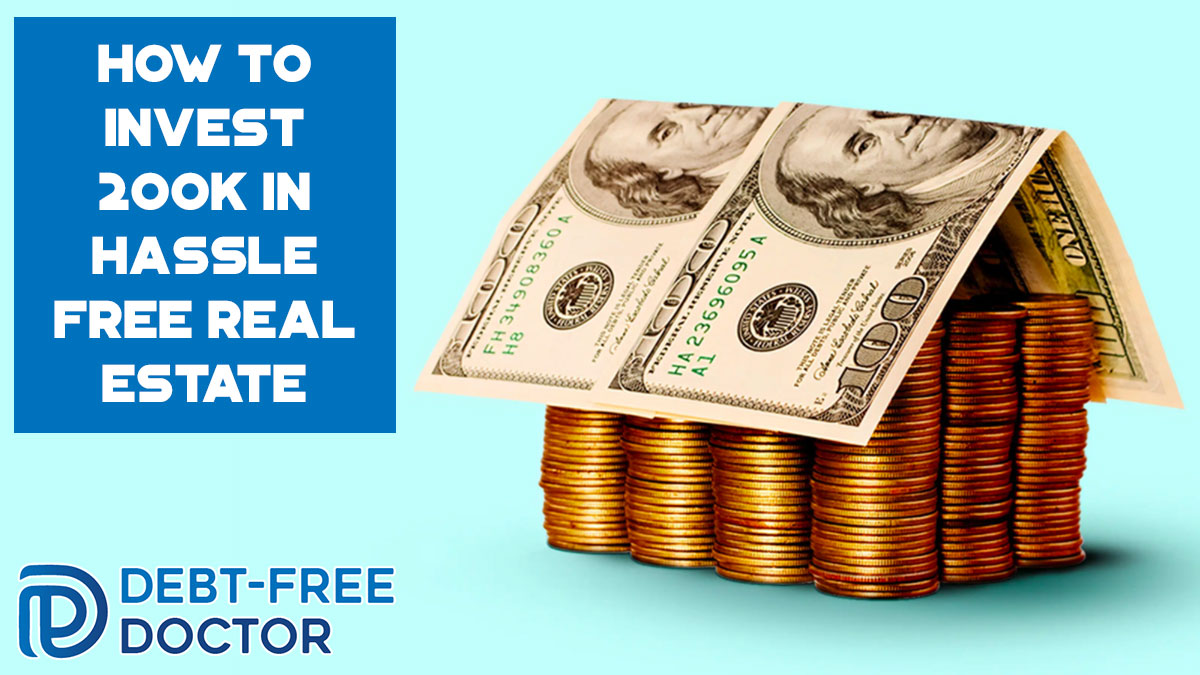How To Invest 200K In Hassle Free Real Estate
A Passive Investor Circle member recently asked, “Dr. Jeff, my wife and I heard that we can take money out of our 401k due to the pandemic. We’d like to invest $200K in something other than the stock market. Can you help?”
The March 2020 national shutdown caused many folks to take a step back and re-evaluate their finances.
For some, it was a good thing as many needed an excuse to make some significant changes.
What about you?

Were you affected and if so, did you do anything about it?
Several dentists on Dentaltown remarked that being unable to drill on teeth for several months made it clear that consumer debt had to be eliminated once they were able to get back to the chair.
Others realized that having a nicely padded emergency fund (like Dave recommends) made life a little more tolerable when income temporarily vanished.
The shutdown opened many eyes to how and where the money is flowing to.
Let’s take a deeper dive into how I answered the reader’s question.
What Are The IRA Withdrawal Rules Under The CARES Act?
The couple was basically asking how to invest 200K from their 401k ($100K from each of their plan).
Normally, if you wanted to tap into your retirement account (IRA, 401k, etc) before age 59 ½, then you’d have to pay a 10% early withdrawal penalty.
For those that had their finances negatively affected by the pandemic, temporary changes to the rules under the CARES Act allows more flexibility involving making a Coronavirus-Related Distribution (CRD) from tax-deferred retirement accounts during 2020.
Here’s an overview from NerdWallet:
- Individuals affected by COVID-19 can withdraw up to $100,000 from employee-sponsored retirement accounts like 401(k)s and 403(b)s, as well as personal retirement accounts, such as traditional individual retirement accounts, or a combination of these.
- The 10% penalty will be waived for distributions made in 2020.
- There are no mandatory withholding requirements.
- The distribution can be taxed as income spread evenly over tax years 2020, 2021 and 2022. However, if you can pay back the amount you took out within three years, you can claim a refund on those taxes.
- 401(k) plan participants can now take out 100% of their vested balance (previous rules limited borrowers to 50%) as a loan up to $100,000, and payments on this loan can be delayed for up to one year.
How To Invest 200K In Hassle Free Real Estate
I connected with the doctor that originally asked about taking a CRD.

Both him and his wife were each considering taking $100K out of their respective 401k accounts in order to invest in something outside of the market.
They had been reading our blog for over a year but never felt the need (until now) to make a move with real estate investing.
I’m NOT a CPA or tax attorney and recommended they contact one before taking an early distribution.
Before You Invest $200K

Unless you’re someone like Warren Buffett or Jeff Bezos, $200,000 is a boatload of money.
I approach each Passive Investor Circle member’s questions with the frame of mind, “What would I do in the particular situation?”
If my wife and I wanted to take a CRD, then we’d sit down and discuss any needs or expectations we’d have regarding this investment.
Questions needing addressed:
- Do we need the money short or long term?
- Are we saving for something such as a vacation, down payment on a rental, kid’s college or something else?
- Is there a particular return on investment (ROI) we’re trying to accomplish?
- Are tax benefits important to us regarding this investment?
- Investing for passive income or best returns on capital?
Real Estate Investing: Active vs Passive

I set up a call with the couple to learn more about their situation before making recommendations.
Right off the bat I could tell that they were busy as I could hear kids crying in the background (yes, I remember those days!).
He’s a full-time practicing physician and his wife teaches at the local public middle school.
For their situation, becoming landlords was OUT of the question.
That made it easier for me to help guide them as it took active real estate investing off the list.
If you’re contemplating becoming a real estate investor then your first stop should be asking yourself if you want a second job (landlording) or not.
He didn’t have time to learn what it takes to become an active investor, and he certainly didn’t want to take his attention away from his growing family.
Honestly, it sounded as if his wife wouldn’t like it too much if he decided to leave her alone while trying to raise the kids.
I’m not a marriage counselor but do know a thing or two about keeping my “better half” happy! 🙂
Answering calls from tenants at all hours of the night and possibly having to leave to check on clogged toilets wasn’t a good fit for this family.
Real Estate Syndications
The couple had read up on ways that they could passively invest in real estate via syndications. After narrowing down their choices on how to invest 200K, they were excited to learn that syndications were a great option.
What is a syndication?
A real estate syndication is a group investment that allows you to passively invest in real assets.
You’re able to pool together money with a group of other investors to buy a larger asset such as an apartment complex, together.
Best of all, this means that they get to invest in real estate without having to deal with any of the headaches or time commitments of being landlords.
Instead, the general partners/sponsors leading the syndications will do all the heavy lifting of managing the properties. This allows the couple to benefit from the passive cash flow while still being able to focus on raising their kids.
The obvious next question they wanted answered was….
How much income will $200K generate?
I took a look at the returns of one of the multifamily real estate syndication deals we invested in 2019. It is currently paying out an annual 8% preferred return.

What’s a preferred return?
At a basic level, a preferred return (pref) refers to the ordering in which profits from a real estate project are distributed to investors.
It’s a threshold return that limited partners are offered prior to the general partners receiving payment.
The limited partners are the investors in a deal (you and me) and the general partners are the ones that put deals together and manage them.
As an example, most of the deals I’m currently in pay out a 7-8% pref on either a monthly or quarterly basis.
This means that the investors will receive the first portion of the monthly cash flow up to 7-8%.
What about our couple?
For our couple searching how to invest $200k, we’ll use the 8% example.
This means that for their investment of $200k, they should expect:
- $16,000 in passive income per year or
- $1,333 per month
Also, our investment was planned to be sold in 5 years with a projected 2x equity multiple.
In other words, when factoring in both the distributions or cash flow and the profits from the sale of the asset in year #5, they could double their money.
Basically they’d start with $200k and end up with $400k in 5 years. (Not too shabby)
Don’t Miss Any Updates. Each week I’ll send you advice on how to reach financial independence with passive income from real estate.
Sign up for my newsletterHere’s the calculation:
- 8% preferred return on $200k = $16k/year ($1333/month)
- $16k per year for 5 years = $80k
Profits from the sale of the asset in year 5 are projected to be 40-60%. Assuming this lands at 60%, that would mean they’d get $120k once the asset is sold. ($200k x 60% = $120k)
$80k (passive income over 5 years) + $120k (profits from the sale) = $200k total returns
Not only are they able to turn $200k into nearly $400k in just 5 years, they also reap the benefits of direct ownership:
- cash flow
- equity
- appreciation
- tax benefits
“All successful people have a goal. No one can get anywhere unless he knows where he wants to go and what he wants to be or do. ” Norman Vincent Peale
They’re able to accomplish all this without having to actively manage the asset which directly lines up with their goals.
Are You Ready To Invest?

So there you have it. Now you should understand what the power of investing in syndications can bring.
Hopefully this has motivated you into taking the next step regarding investing in passive real estate yourself.
If that’s the case, the best thing you can do is to invest your time into educating yourself, to make sure that this type of investment aligns best with your goals.
To access our exclusive members-only resources, get samples of our previous real estate syndication deals, and to consider investing alongside us, join the Passive Investors Circle today!
Join the Passive Investors Circle

